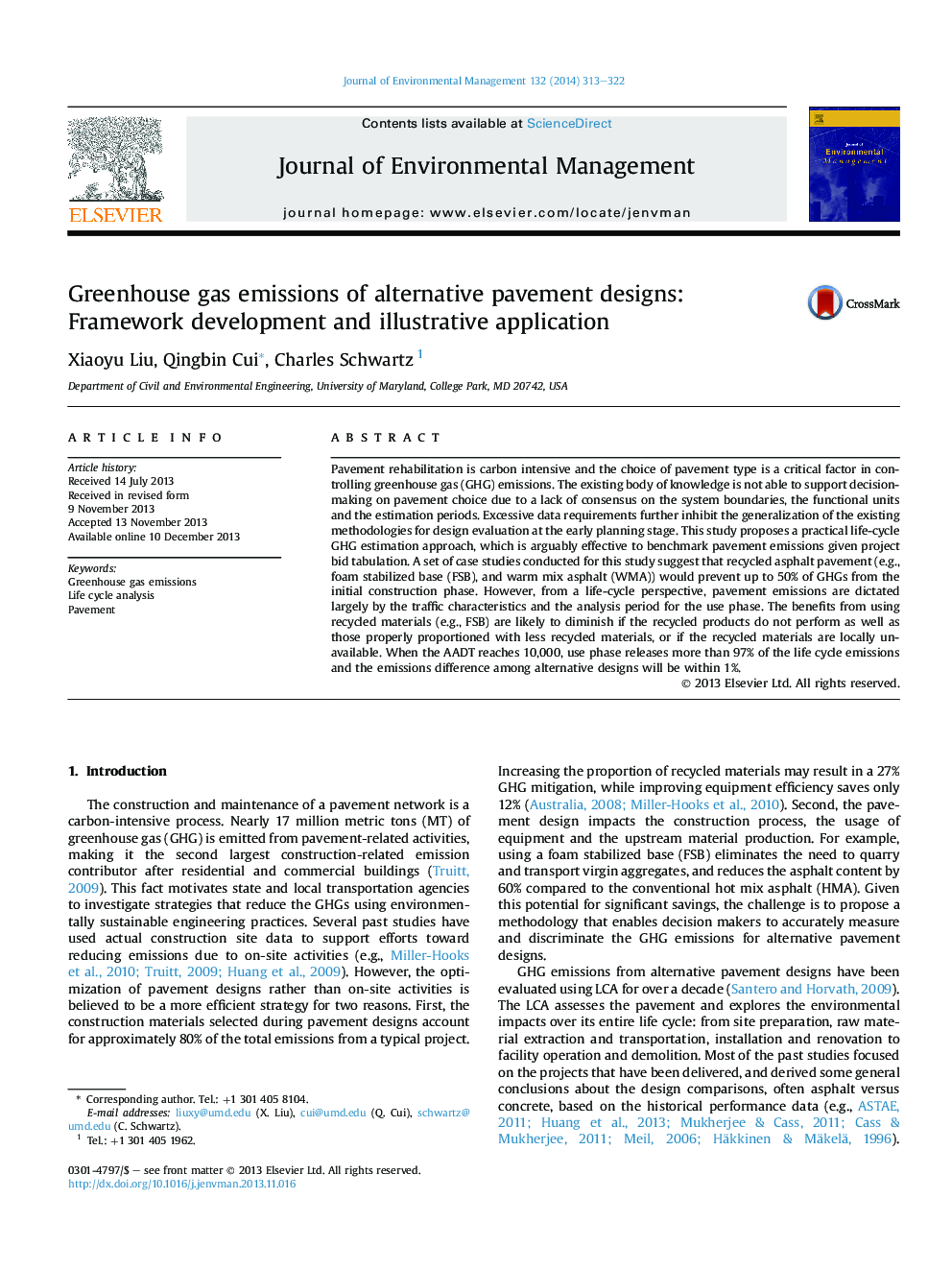| کد مقاله | کد نشریه | سال انتشار | مقاله انگلیسی | نسخه تمام متن |
|---|---|---|---|---|
| 1055808 | 1485280 | 2014 | 10 صفحه PDF | دانلود رایگان |
• Greenhouse gases from pavement are quantified using bid tabulation at design phase.
• Pavement layers and structural performance are factored into emission comparison.
• Appropriate choice of materials reduces up to 50% of emissions from paving jobs.
• Emissions from clearing and traffic delay contribute 17% and should not be ignored.
• Cradle-to-grave emission is dictated largely by traffic volume and analysis period.
Pavement rehabilitation is carbon intensive and the choice of pavement type is a critical factor in controlling greenhouse gas (GHG) emissions. The existing body of knowledge is not able to support decision-making on pavement choice due to a lack of consensus on the system boundaries, the functional units and the estimation periods. Excessive data requirements further inhibit the generalization of the existing methodologies for design evaluation at the early planning stage. This study proposes a practical life-cycle GHG estimation approach, which is arguably effective to benchmark pavement emissions given project bid tabulation. A set of case studies conducted for this study suggest that recycled asphalt pavement (e.g., foam stabilized base (FSB), and warm mix asphalt (WMA)) would prevent up to 50% of GHGs from the initial construction phase. However, from a life-cycle perspective, pavement emissions are dictated largely by the traffic characteristics and the analysis period for the use phase. The benefits from using recycled materials (e.g., FSB) are likely to diminish if the recycled products do not perform as well as those properly proportioned with less recycled materials, or if the recycled materials are locally unavailable. When the AADT reaches 10,000, use phase releases more than 97% of the life cycle emissions and the emissions difference among alternative designs will be within 1%.
Journal: Journal of Environmental Management - Volume 132, January 2014, Pages 313–322
